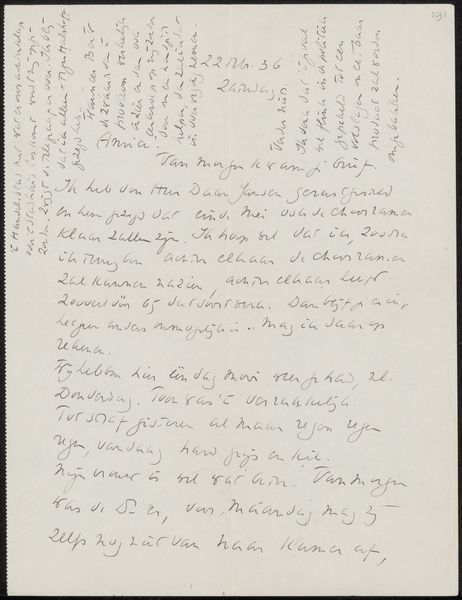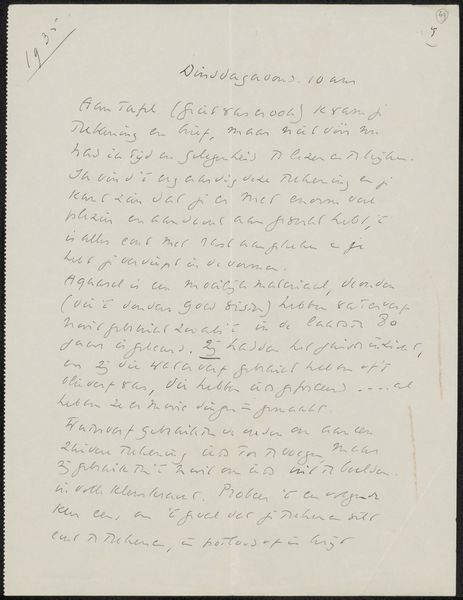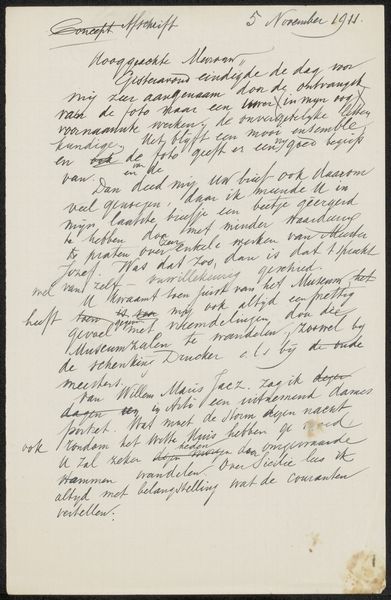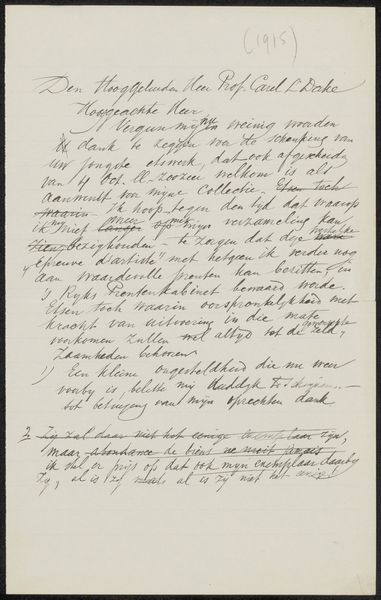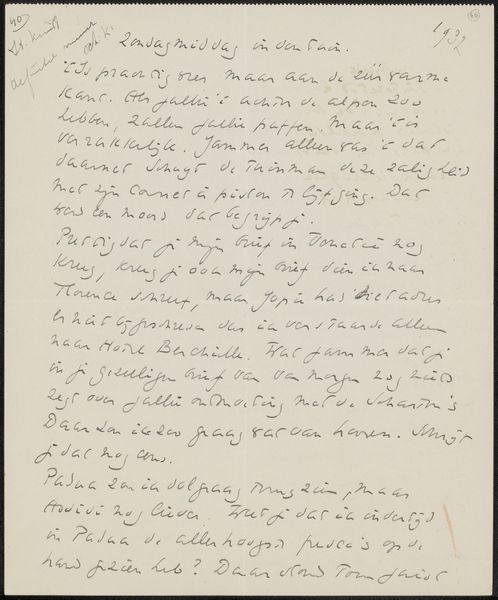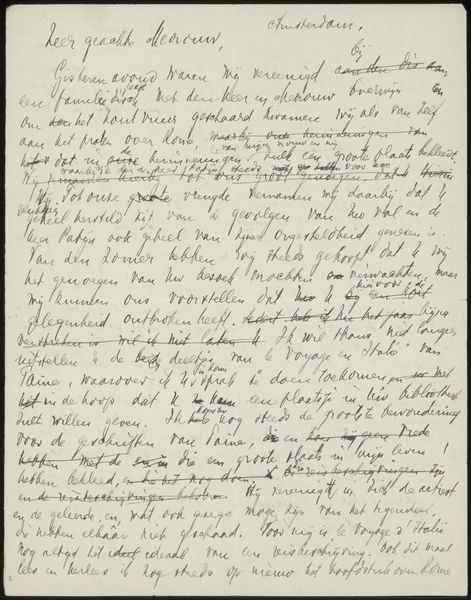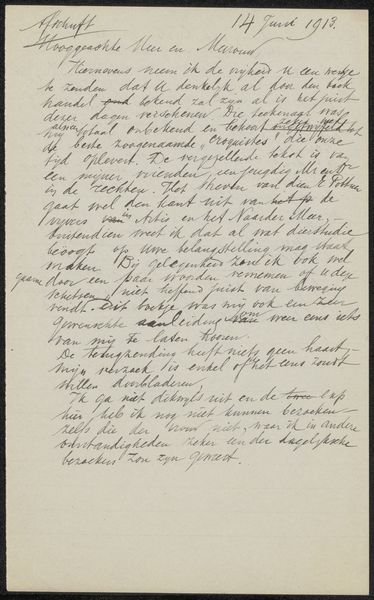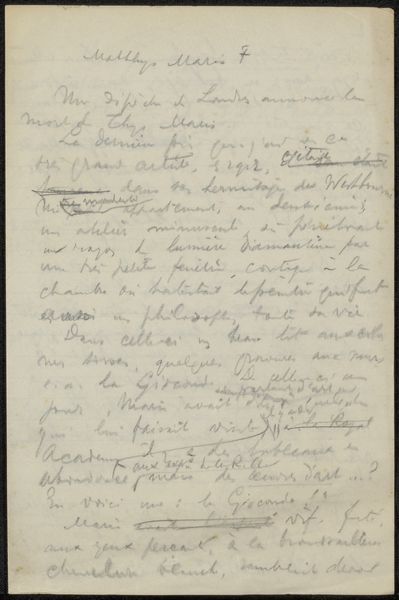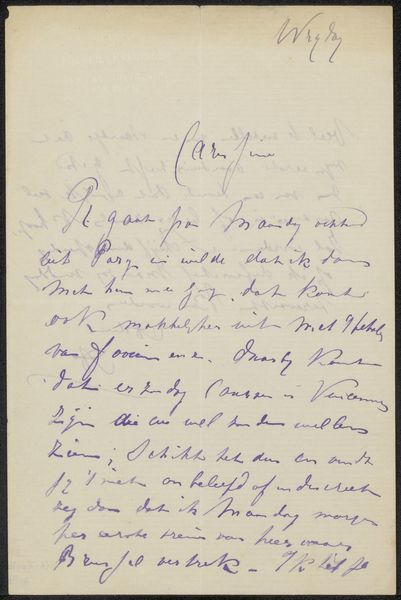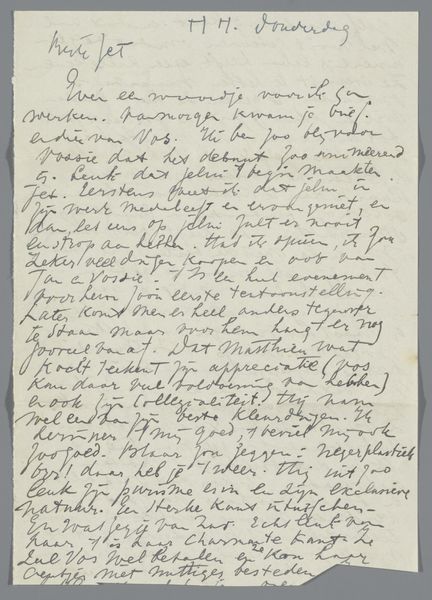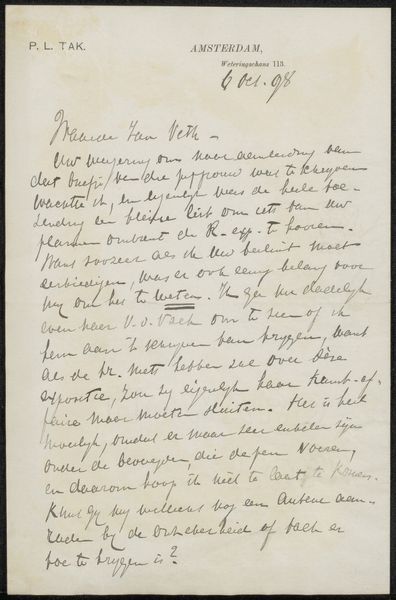
drawing, paper, ink, pencil
#
portrait
#
drawing
#
paper
#
ink
#
pencil
Copyright: Rijks Museum: Open Domain
Curator: We're standing before "Brief aan Ina van Eibergen Santhagens-Waller," a piece by Richard Nicolaüs Roland Holst, dating from around 1931, currently held in the Rijksmuseum collection. It's a drawing made with ink and pencil on paper. Editor: It strikes me immediately as very intimate and personal, like a stolen glance into someone's private correspondence. The script is elegant, but quick, suggestive of immediacy. The sketch of a woman's head is light, nearly ghostly, giving it an introspective mood. Curator: Indeed. Holst, as a prominent figure in the Dutch artistic and socialist movements, would often engage in extensive correspondences. It is part of a conversation. Looking closely, you can see notes, written quickly in Dutch, detailing daily life events. This suggests both an informal relationship and perhaps a sharing of artistic observations. Editor: Absolutely, its materiality adds to this feeling. Paper as a medium carries with it notions of ephemerality. Holst has quickly jotted down images and details with swift, light pencilstrokes, leaving the materiality of the piece highly visible. It's the directness of the medium—pencil to paper—that renders the letter an important glimpse into the artist’s personal sphere. Curator: What’s so fascinating to me is considering who Ina was and the socio-political world she inhabited alongside Holst. These individuals circulated within intellectual circles during a period of considerable social upheaval. Roland Holst himself, drawing from socialist ideology, dedicated artwork to address questions of class. The casualness of a letter offers an understanding of those same ideas, through lived experience, among artistic allies. Editor: And I think seeing it today offers such a compelling contrast: a world of fast, digital communications confronted by the slow, material artifact. The fact that we are listening to the audio describing it makes its silence so visible. Curator: Exactly. The very act of preservation here allows us to encounter intimacy from the past while confronting current conditions of contact. It is so interesting. Editor: Agreed, a touching reminder of both the power of human connection and the shifting ways in which that power manifests.
Comments
No comments
Be the first to comment and join the conversation on the ultimate creative platform.
